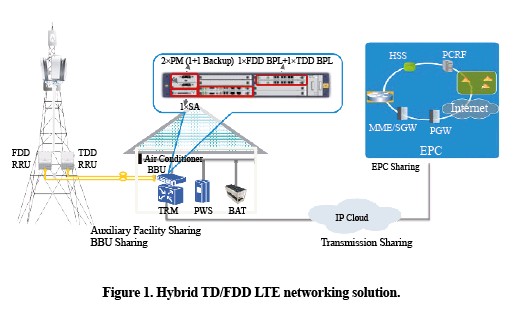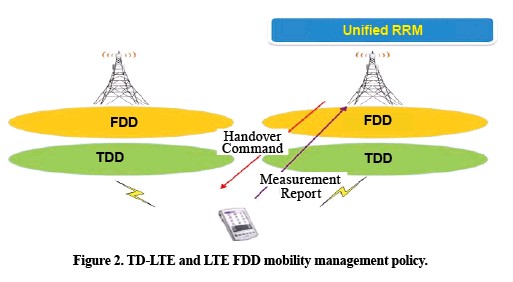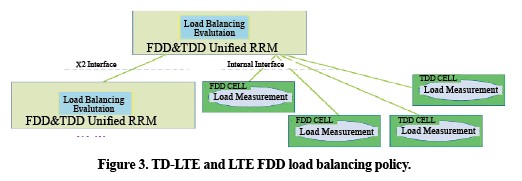Hybrid TDFDD LTE Networking Solution
Maximizing Spectrum Efficiency
Cisco predicts that global mobile data traffic will reach 11.2 EB per month in 2017, and compound annual growth rate (CAGR) will be 66% from 2012 to 2017. Fast-growing demand for mobile data speed has been the impetus for LTE commercialization. According to GSMA, as of July 2013, 194 commercial LTE networks had been launched in 75 countries. Eighteen of these networks are commercial TD-LTE networks, and nine are combined TD-LTE and LTE FDD networks.
To meet the huge demand for mobile data, more spectrum resources are required. However, paired spectrum resources used for LTE FDD are increasingly scarce, and operators often refarm their 2G and 3G spectrum for 4G services. In contrast, asymmetric TD-LTE spectrum resources are more abundant. As TD-LTE is mature and the industrial chain gradually improves, there will be more and more networks operating in TD-LTE and LTE FDD dual mode. In China, TD-LTE is allocated with 190 MHz in the 2.6G band while LTE FDD is allocated with 2 × 30 M in the 1.8G and 2.1G bands. To cope with the flood of data, hybrid TD/FDD LTE is the trend to maximize spectrum use.
Hi3G Sweden’s hybrid TD/FDD LTE network, built exclusively by ZTE, is the world’s first commercial dual-mode 4G network. Compared to single LTE FDD, dual-mode TD-LTE/FDD increases costs by 25–35%, but total network capacity doubles. Hi3G won the honor of “Best Mobile Network” during third-party testing. The benefits of a hybrid network are many.
ZTE’s hybrid TD/FDD LTE solution enables full convergence of TD-LTE and LTE FDD. Key issues, such as sharing a common platform and seamless roaming, are properly addressed. In 2013, ZTE won the Global TD-LTE Initiative (GTI) Innovation Award for its FDD/TDD converged solution at the Mobile World Congress in Barcelona. The solution has been widely accepted by operators worldwide.
Hybrid TD/FDD LTE Networking Solution

ZTE’s hybrid TD/FDD LTE networking solution is based on cutting-edge SDR platform that supports dual-mode TD-LTE and LTE FDD. The solution has the following features:
● core network EPC sharing. Core network construction costs are reduced. Multiple networks including GERAN, UTRAN, HSPA, E-UTRAN, EV-DO and eHRPD are converged, accessed and managed.
● BBU sharing. A single BBU supports both TD-LTE and LTE FDD. The main control board can also be shared. Channel elements of TD-LTE and LTE FDD share the same hardware and can be reconfigured through software.
● RRU series. A series of TD-LTE and LTE FDD RRUs are provided. The Magic RRU series has the RF module that features the largest output power in the industry and can meet different application scenarios.
● clock sharing. Multiple clock synchronization modes such as GPS, Big Dipper and IEEE 1588v2 are supported. Sharing a GPS with CDMA base stations is also supported.
● transmission sharing. The unique dynamic bandwidth scheduling algorithm enables dynamic transmission sharing between TD-LTE and LTE FDD systems and makes full use of transmission resources.
● network sharing. A unified platform is built up for network management, optimization and maintenance. The platform also enables converged management for 2G, 3G and 4G networks. This dramatically reduces OAM costs for multiple networks.
TD-LTE and FDD LTE Interoperability
TD-LTE and LTE FDD networks do not synchronize coverage because they operate on different spectrums and have different positions. To ensure consistent user experience, the two networks must be fully interoperable with each other. The principles for TD-LTE and LTE FDD interoperability are as follows:
Idle State
● Depending on the quality of detected cell signals and the network search strategy, a UE resides in either an LTE FDD network or a TD-LTE network with good signal quality.
● Based on an operator’s policies, a UE is guided to preferentially reside in an LTE FDD network or a TD-LTE network by setting frequency priorities and re-selection thresholds for the two networks.
Connection State
● Data traffic is carried over an LTE FDD network or a TD-LTE network which a UE resides in.
● Data traffic can also be carried over a specific LTE FDD network or a TD-LTE network depending on the type of services.
● When there is a heavy traffic load in an LTE FDD network or a TD-LTE network, load balancing is used to share the load between the two networks.

A TD/FDD LTE mobility management policy takes into full account LTE FDD or TD-LTE target cell selection from the perspective of base stations. Priority handover to LTE FDD or TD-LTE is implemented by configuring carrier frequency offset and cell offset. Using TD/FDD LTE signal quality as a benchmark, the neighboring cell with the same frequency is selected as the target cell for PS handover, the neighboring cell with a different frequency and a different coverage is a secondary option, and then the neighboring cell with a different frequency and the same coverage is the last choice for PS handover.
A TD/FDD LTE load-balancing policy takes into account the base station load of both serving and neighboring cells in TD-LTE and LTE FDD networks. The X2 interface is used to interact with other base stations for the corresponding load information in the LTE FDD and TD-LTE neighboring cells. The load balancing module makes a policy decision and selects an appropriate cell from the LTE FDD and TD-LTE neighboring cells as the target one for load balancing.
